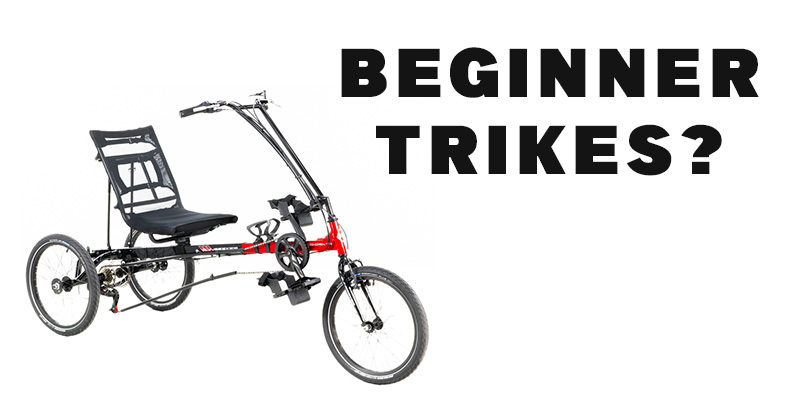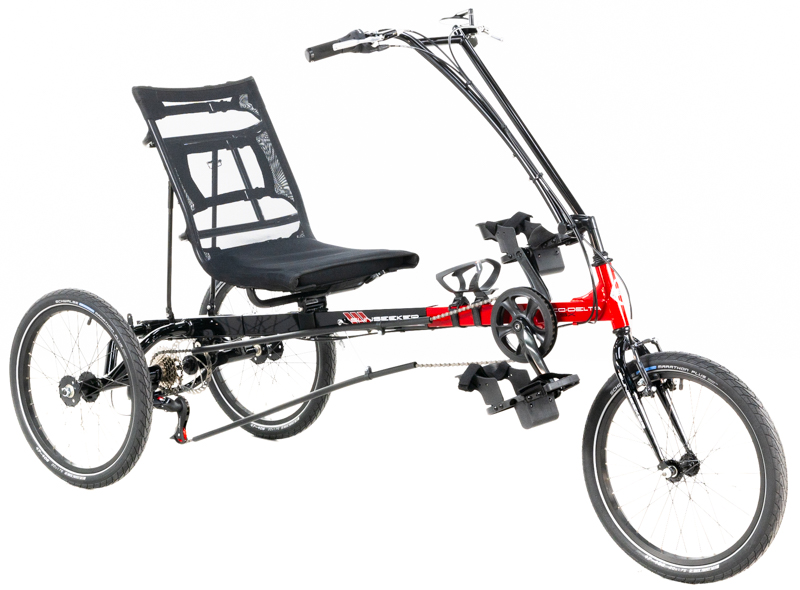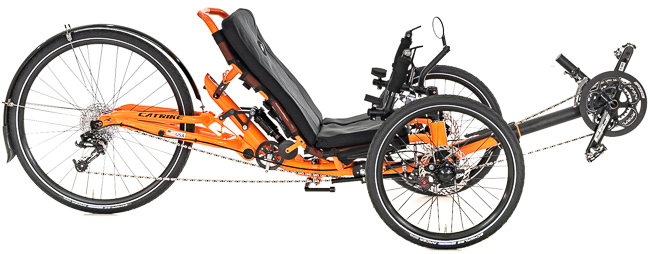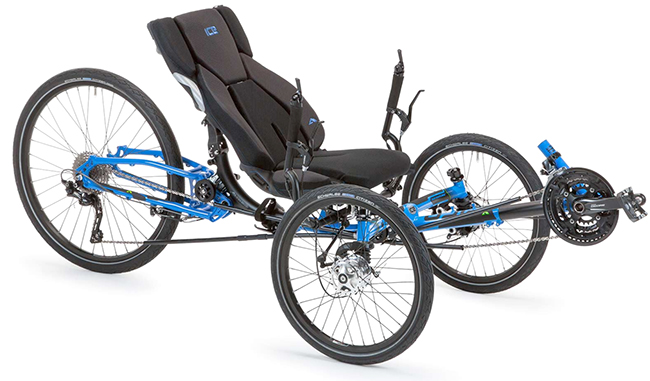

What to Look for in a Beginner Trike
Published on 10/14/2024
If you're just starting out with trike riding, choosing the right trike can feel overwhelming with so many styles, features, and price points available. A beginner trike should be comfortable, easy to handle, and versatile, setting you up for smooth rides and a great overall experience. Hereís a comprehensive guide to help you identify the most important factors to consider when choosing your first trike.
1. Type of Trike: Upright vs. Recumbent
The first decision to make is which type of trike you want to ride: upright or recumbent. Each style has unique characteristics that can impact your comfort, riding position, and usage.

Upright Trikes: These have a traditional seating position, similar to a bicycle, with the rider seated higher up. Upright trikes offer a more familiar riding experience and are easy to mount and dismount, making them ideal for short-distance or city rides.
Recumbent Trikes: With a reclined seat, recumbent trikes provide better back support and reduce stress on the wrists and shoulders. They offer a more ergonomic seating position, which can make long rides more comfortable. However, they may take a bit more practice to get used to due to the lower seating position.
Beginner Tip: If youíre interested in leisurely rides around town, an upright trike is a good choice. For longer rides or if you have back issues, a recumbent trike may offer more comfort.
2. Wheel Size and Tire Type
The size and type of tires affect stability, speed, and handling. For beginner riders, stability and comfort are often the highest priorities.
Standard Tire Size: Most beginner trikes come with 20- to 24-inch tires, which provide a stable ride and make it easy to navigate city streets or paved trails.
Fat Tires: Fat tire trikes are more suitable if you plan to ride on rougher terrains, like gravel paths or sand, as they offer enhanced stability and grip. However, fat tires are heavier and slightly slower on paved surfaces.
Beginner Tip: Choose standard tires for everyday riding on paved or hard-packed surfaces. If you plan to explore more rugged areas, fat tires may be worth considering.
3. Frame Material and Weight

The frame material affects the durability, weight, and handling of your trike. The two most common materials are steel and aluminum.
Steel Frames: Known for durability and a smoother ride due to their shock-absorbing nature, steel frames are generally less expensive but can be heavier.
Aluminum Frames: Lightweight and resistant to rust, aluminum frames are easier to maneuver, transport, and store. They may be slightly more expensive but are a good investment for beginners who want a lighter ride.
4. Gearing Options
Gearing affects how easy it is to pedal on various terrains and inclines. Beginners should look for a trike with a simple gear system that is easy to learn and operate.
Single-Speed Trikes: Great for flat, smooth surfaces and very simple to operate, single-speed trikes are low-maintenance. However, they may be challenging on hills or rougher terrain.
Multi-Speed Trikes: For added versatility, consider a trike with multiple gears, which allows you to shift to an easier gear for uphill climbs and a higher gear for faster, flat stretches.
Beginner Tip: A 3- to 7-speed trike is a good starting point, offering versatility without being overly complicated. If you live in a flat area, a single-speed may be all you need.
5. Comfort and Adjustability
As a beginner, comfort is key to enjoying your rides. Look for a trike with features that can be adjusted to fit your body and riding style.

Seat: An adjustable seat allows you to find the ideal position for your height and comfort. For recumbent trikes, a mesh seat can help keep you cool on longer rides.
Handlebars: Adjustable handlebars help you find a position that feels natural for your arms and shoulders, especially for longer rides. The handlebars should be easy to reach without straining.
Suspension: While not essential, suspension can add comfort on bumpy roads, especially if you plan on riding on mixed terrain.
Beginner Tip: Look for a trike that offers at least some adjustability in the seat and handlebars to ensure a comfortable fit as you get used to riding.
6. Braking System
Reliable brakes are essential for safe riding, particularly if youíll be riding on roads or downhill. The two common braking systems for trikes are rim brakes and disc brakes.
Rim Brakes: Simple and lightweight, rim brakes are effective for dry conditions on flat surfaces. However, they may not perform as well in wet or muddy environments.
Disc Brakes: Offering stronger and more consistent braking power, disc brakes are ideal if youíll be riding in varying weather or on hilly terrain. They can be slightly more expensive, but the added control and safety are worth it for beginners.
Beginner Tip: If youíll be riding in hilly areas or want a bit of extra control, disc brakes are a good choice. Otherwise, rim brakes should suffice for flat, urban rides.
7. Accessories for Safety and Convenience
Certain accessories can make your first trike experience more enjoyable and safer. Here are some essentials to consider:

Lights and Reflectors: Essential for visibility if youíll be riding at dusk or dawn.
Rearview Mirror: Helps you stay aware of traffic without turning your head, which is especially useful for beginners.
Cargo Baskets: These can add storage for commuting or errands, making your trike more versatile.
Bell or Horn: A small but helpful addition for alerting pedestrians and other riders.
Beginner Tip: Make sure your trike has lights, reflectors, and a rearview mirror to increase safety and awareness on the road.
8. Budget Considerations
Beginner trikes can range widely in price, depending on features, materials, and brand. While itís tempting to go for the cheapest option, investing a bit more in quality can lead to a smoother, more reliable ride and potentially lower maintenance costs in the long run.
Beginner Tip: Set a budget that covers not just the trike itself but also essential accessories. Many entry-level trikes offer great quality and durability without breaking the bank.
When choosing a beginner trike, itís all about finding the right balance of comfort, control, and ease of use. Upright trikes are great for familiar, city rides, while recumbent trikes can add comfort for longer outings. Pay attention to the gearing, brake system, and adjustability to ensure a smooth and safe ride. Accessories like mirrors, lights, and baskets can help make your experience even more enjoyable.
Starting with the right trike tailored to your needs can make a huge difference in how much you enjoy the ride. With these tips in mind, youíll be well on your way to a fun and rewarding triking experience!




